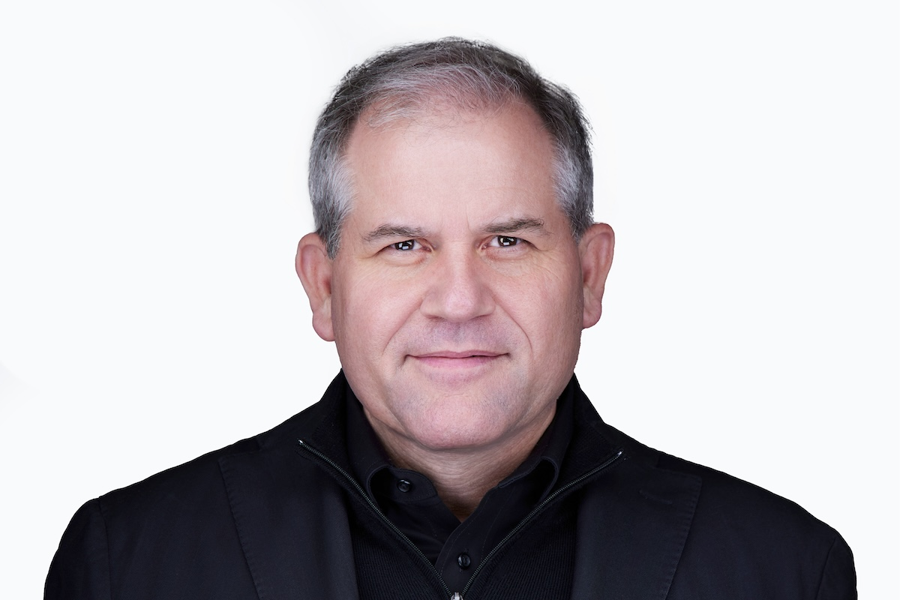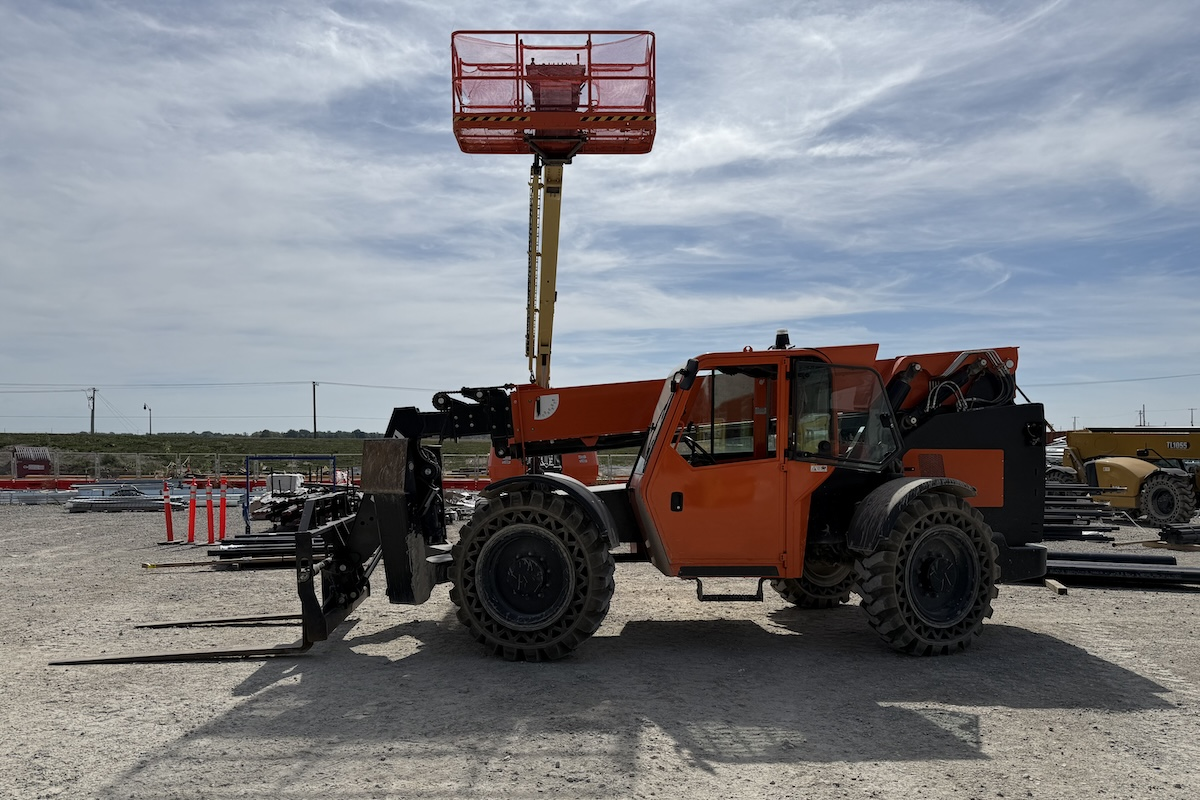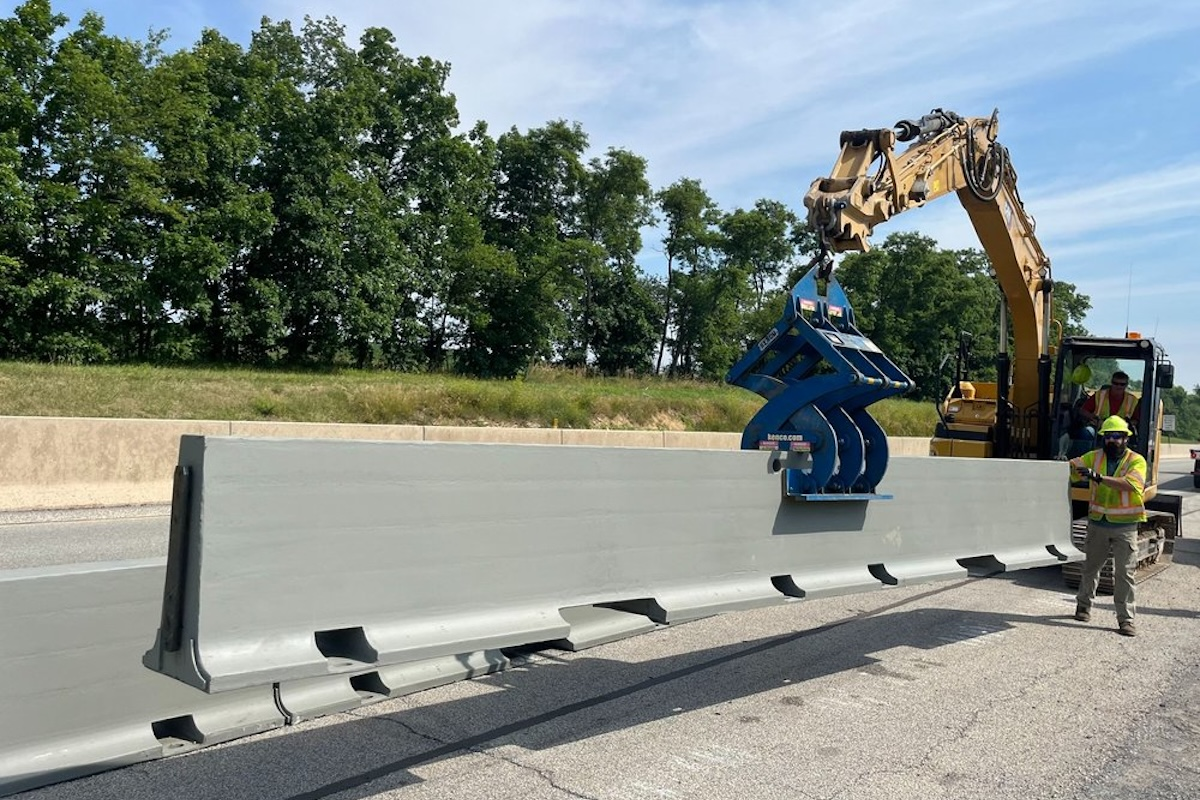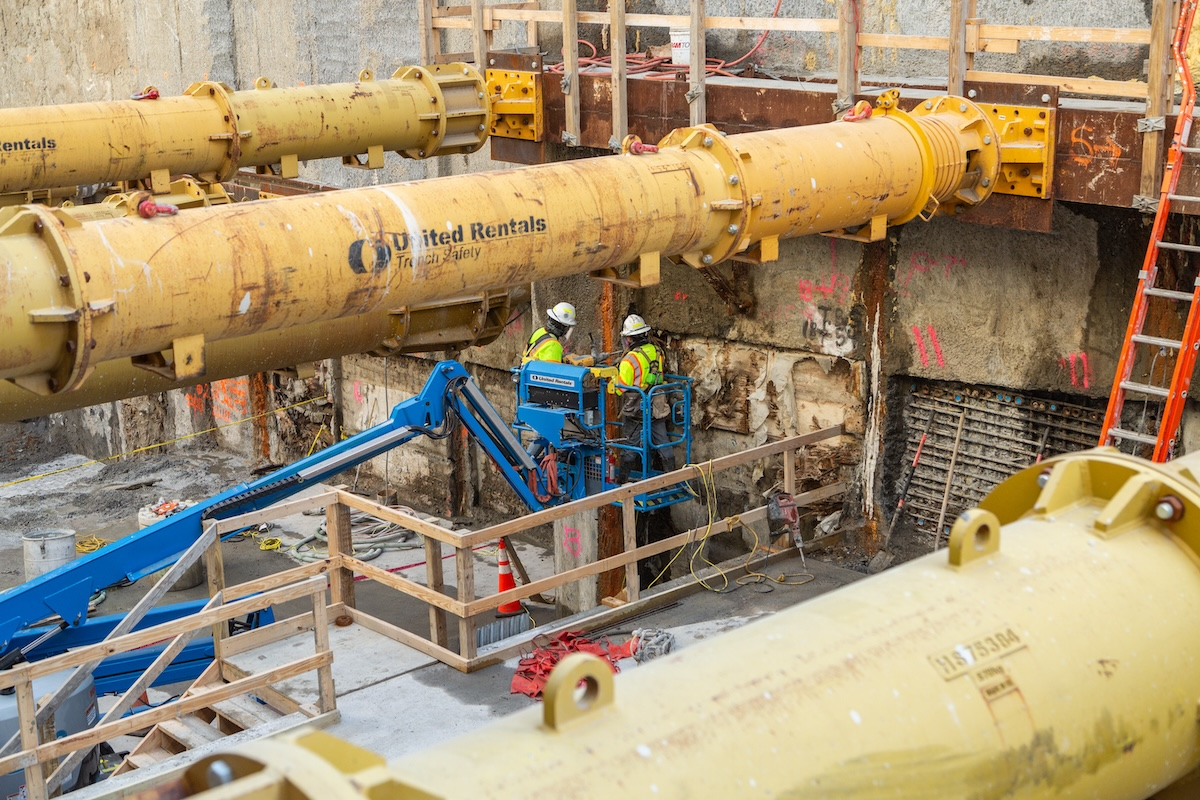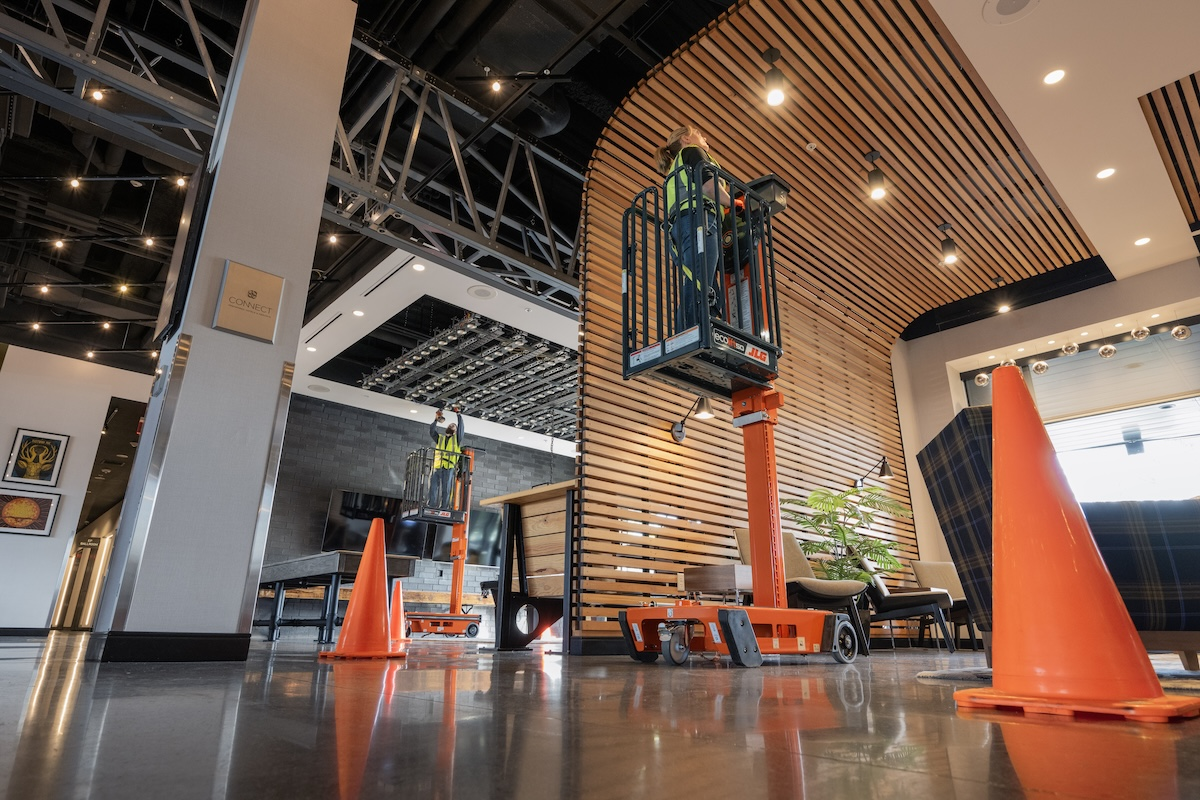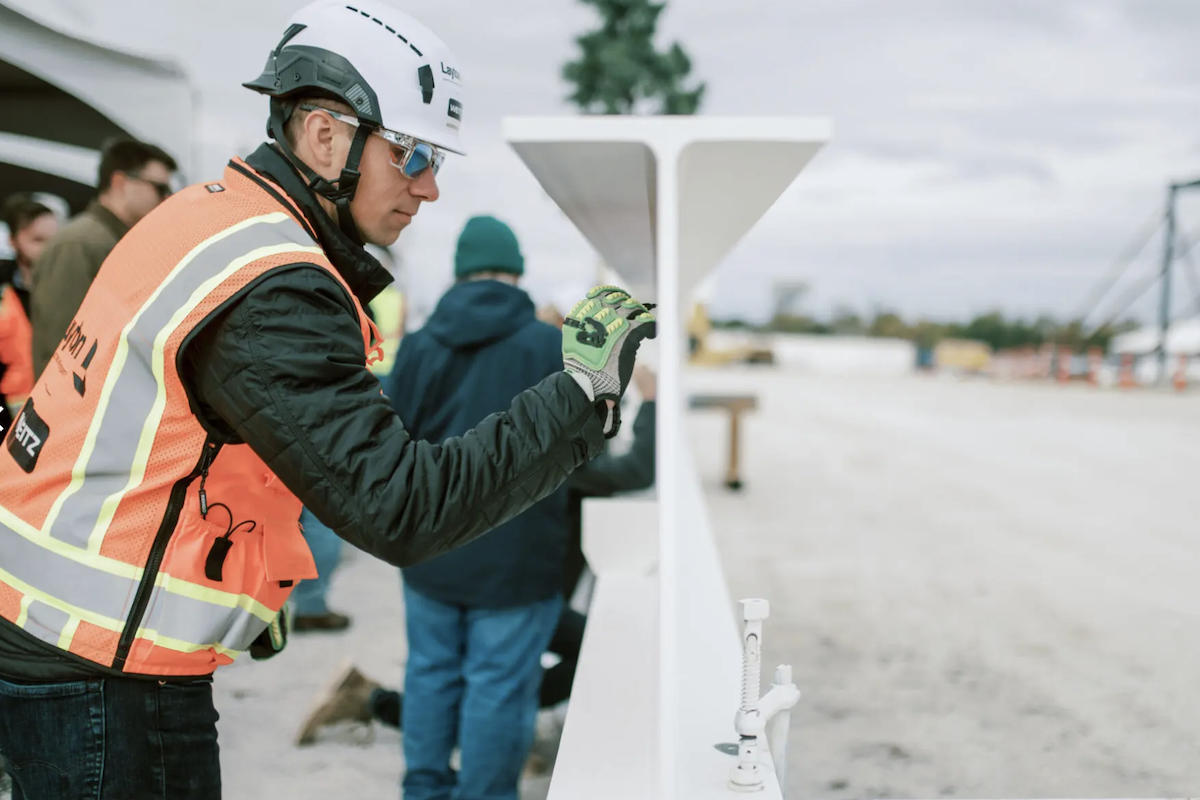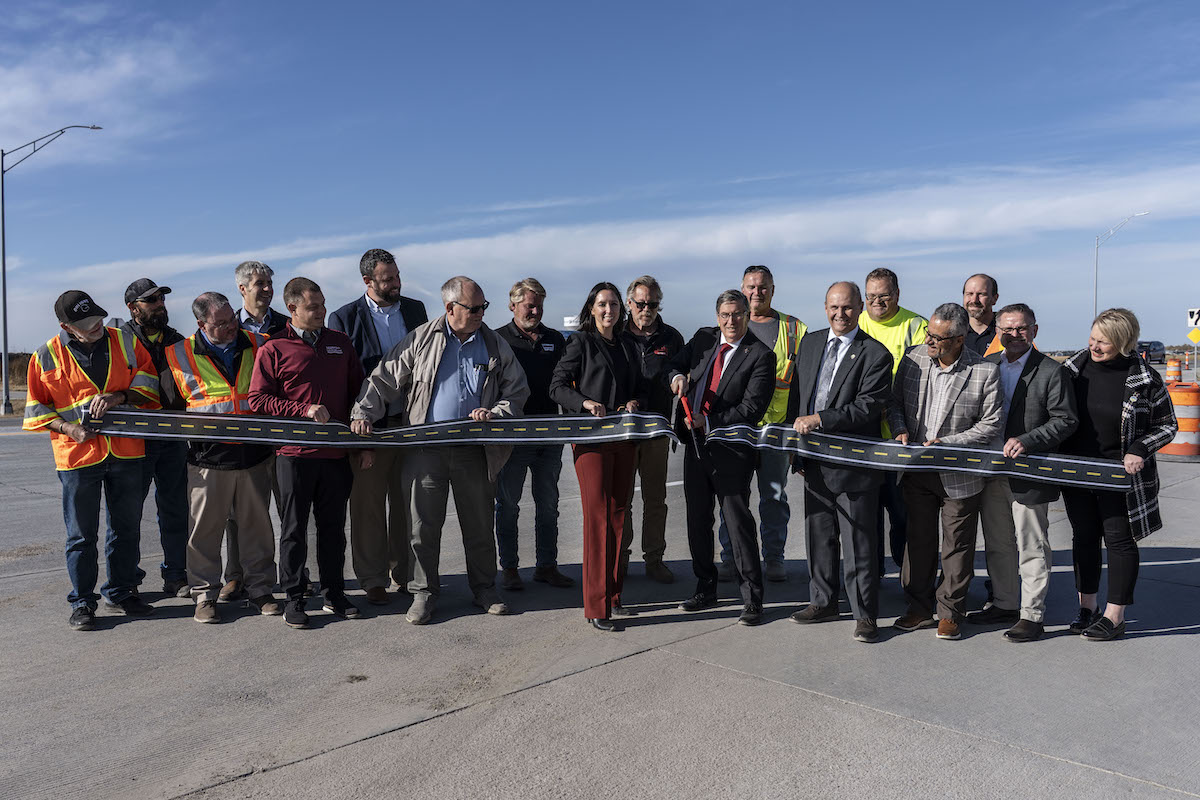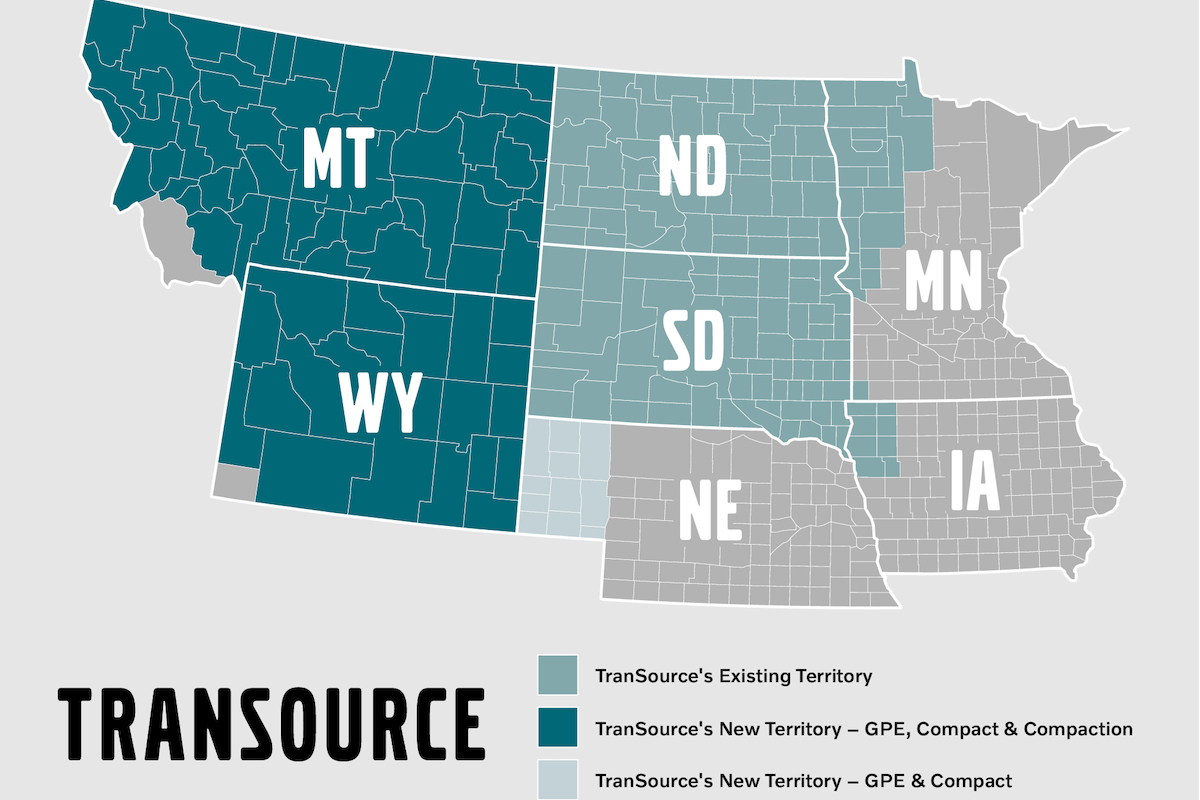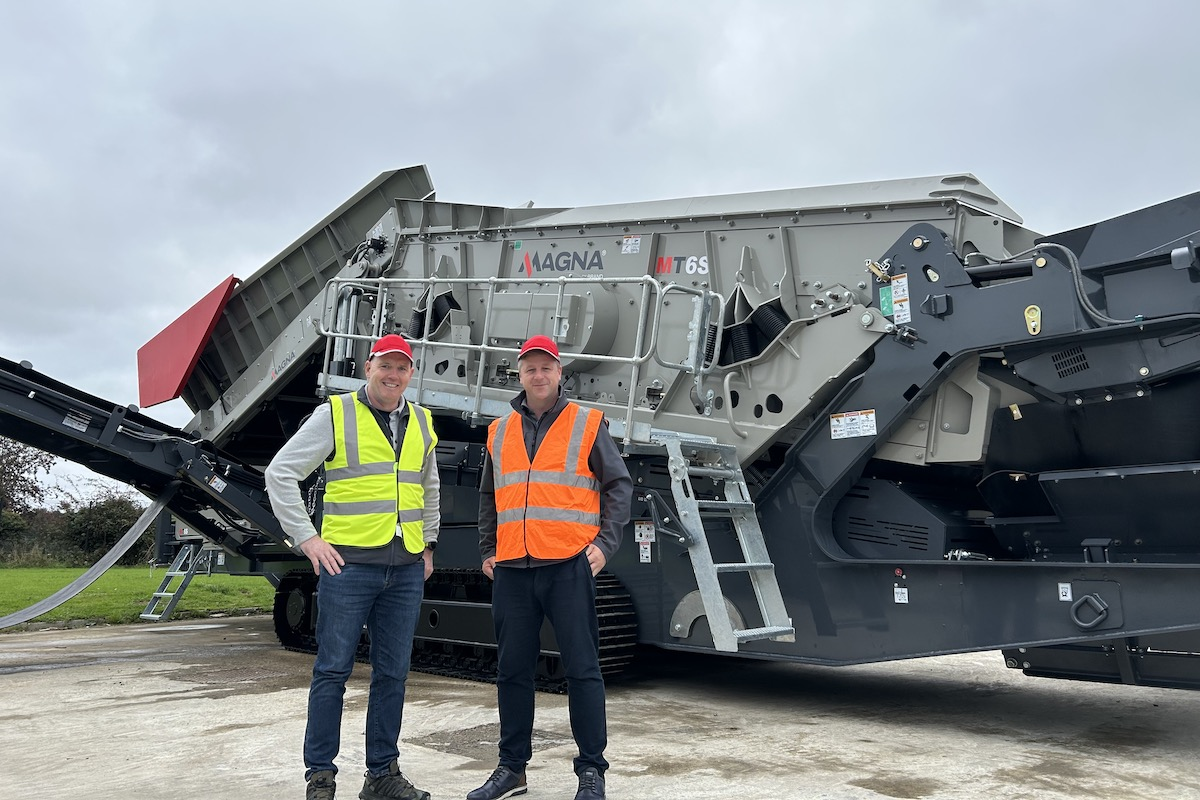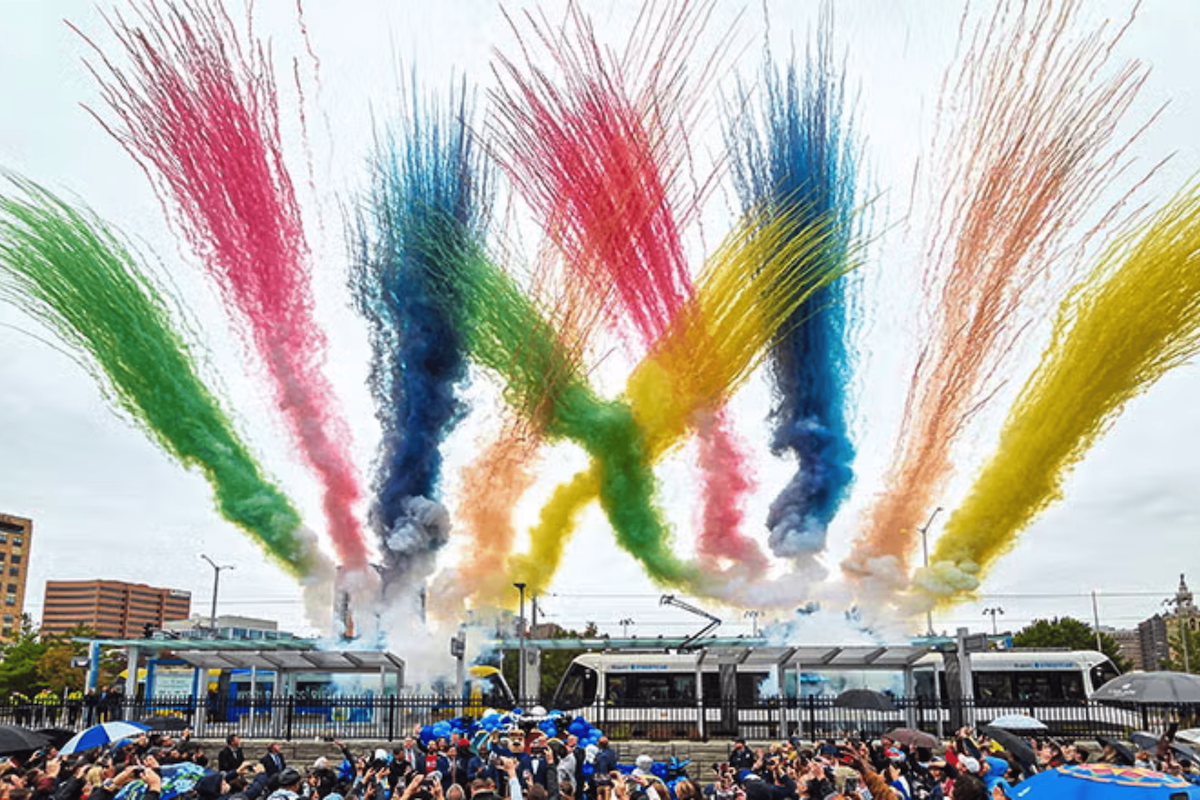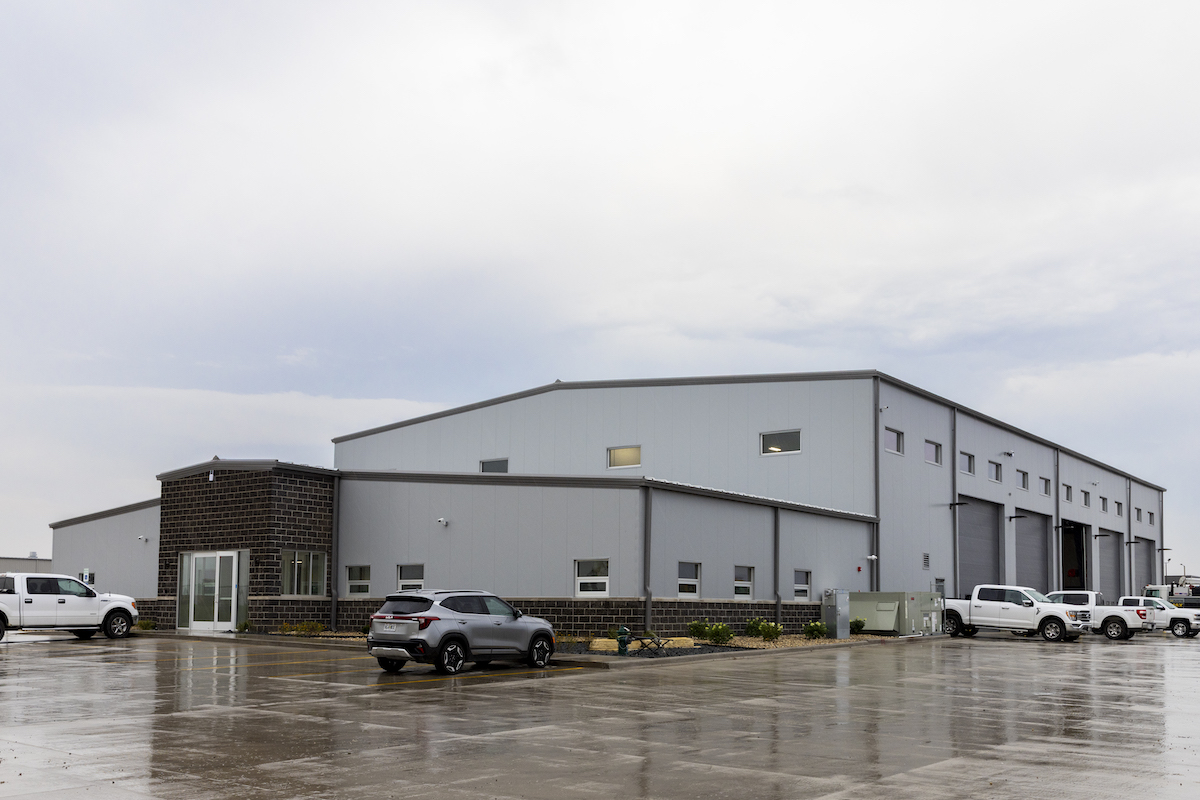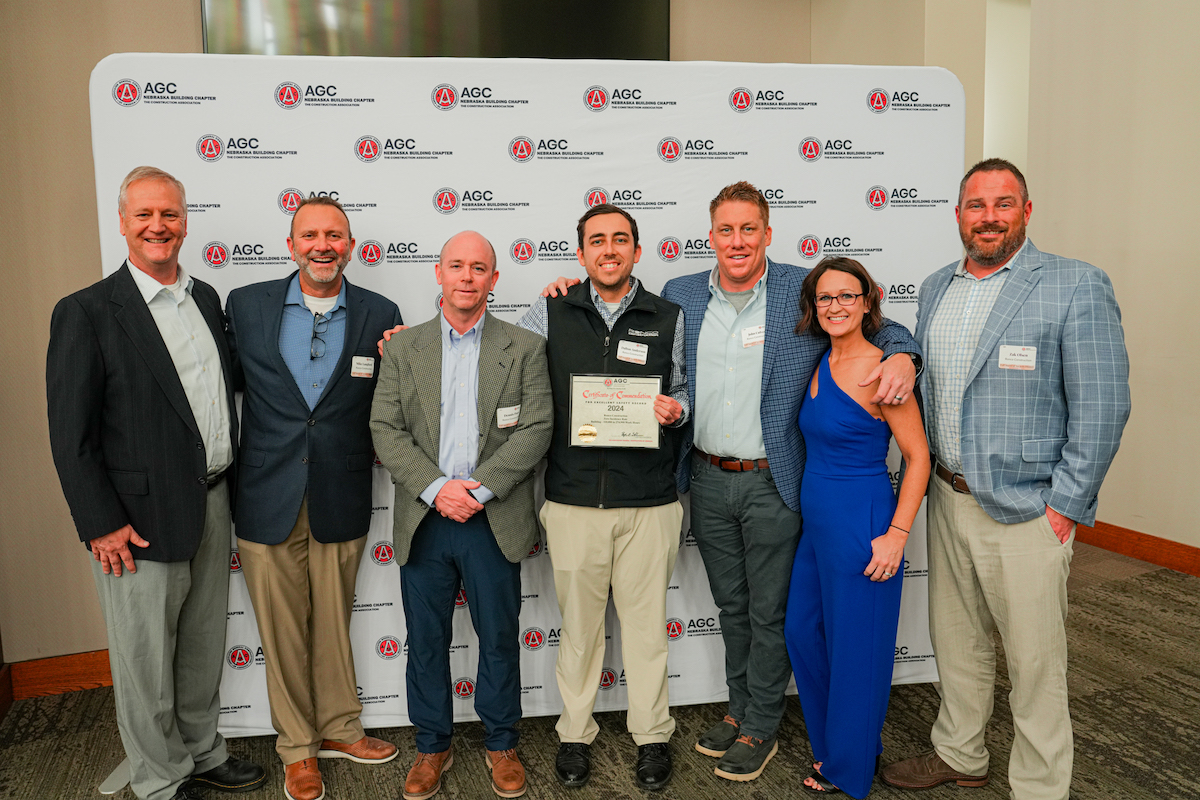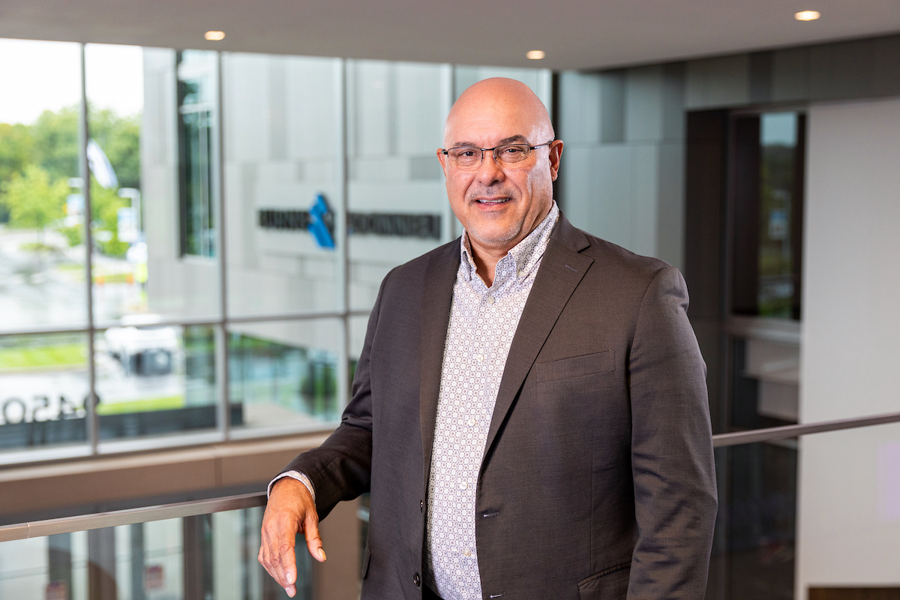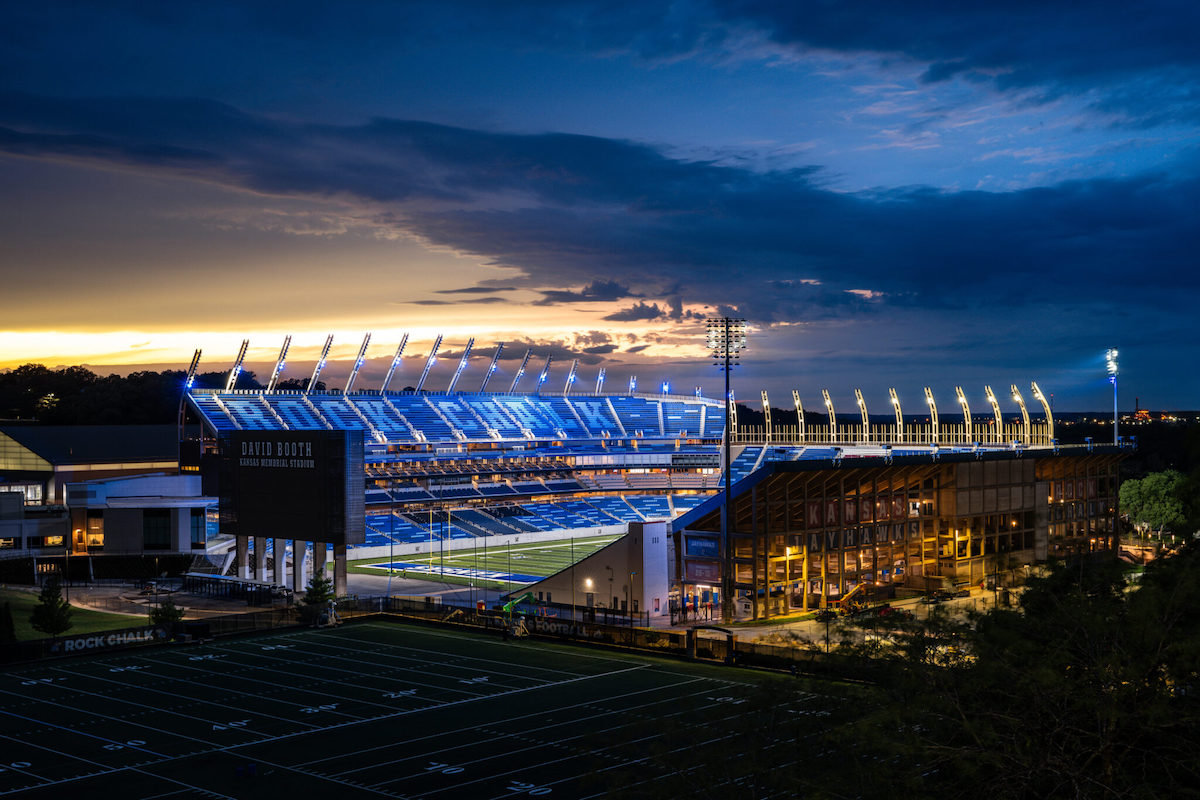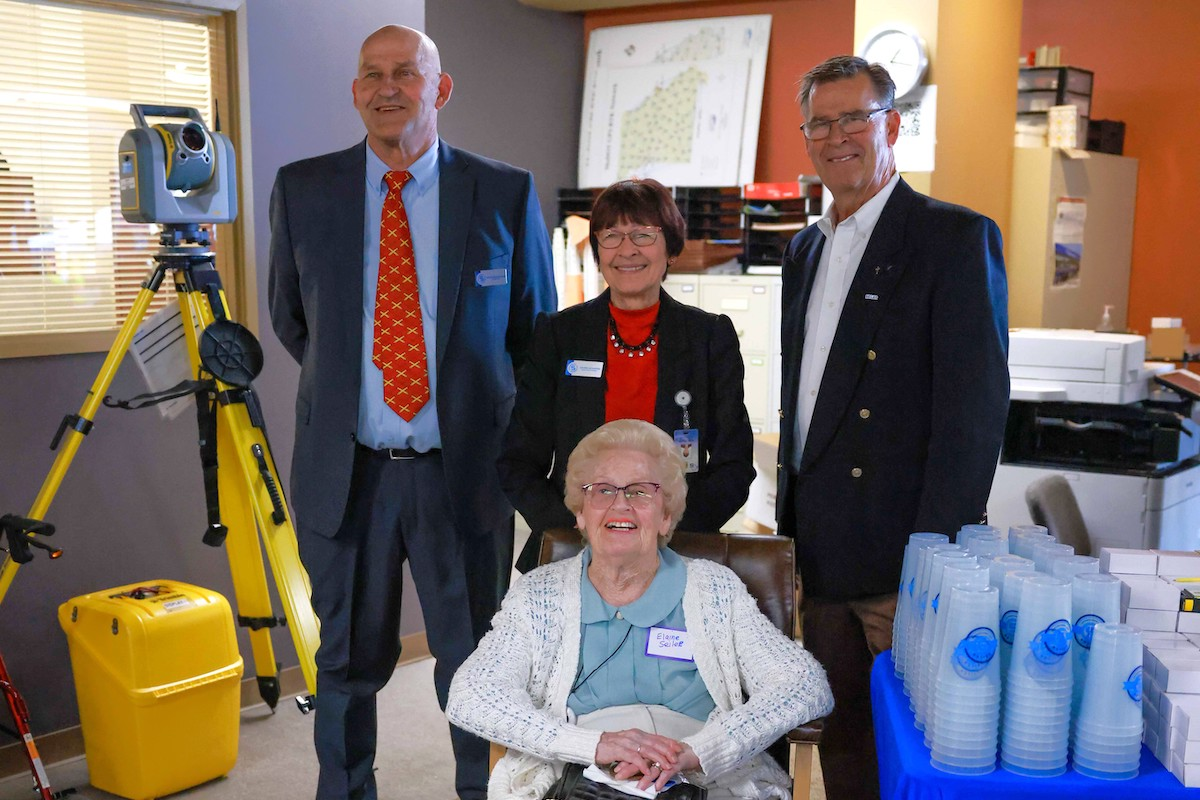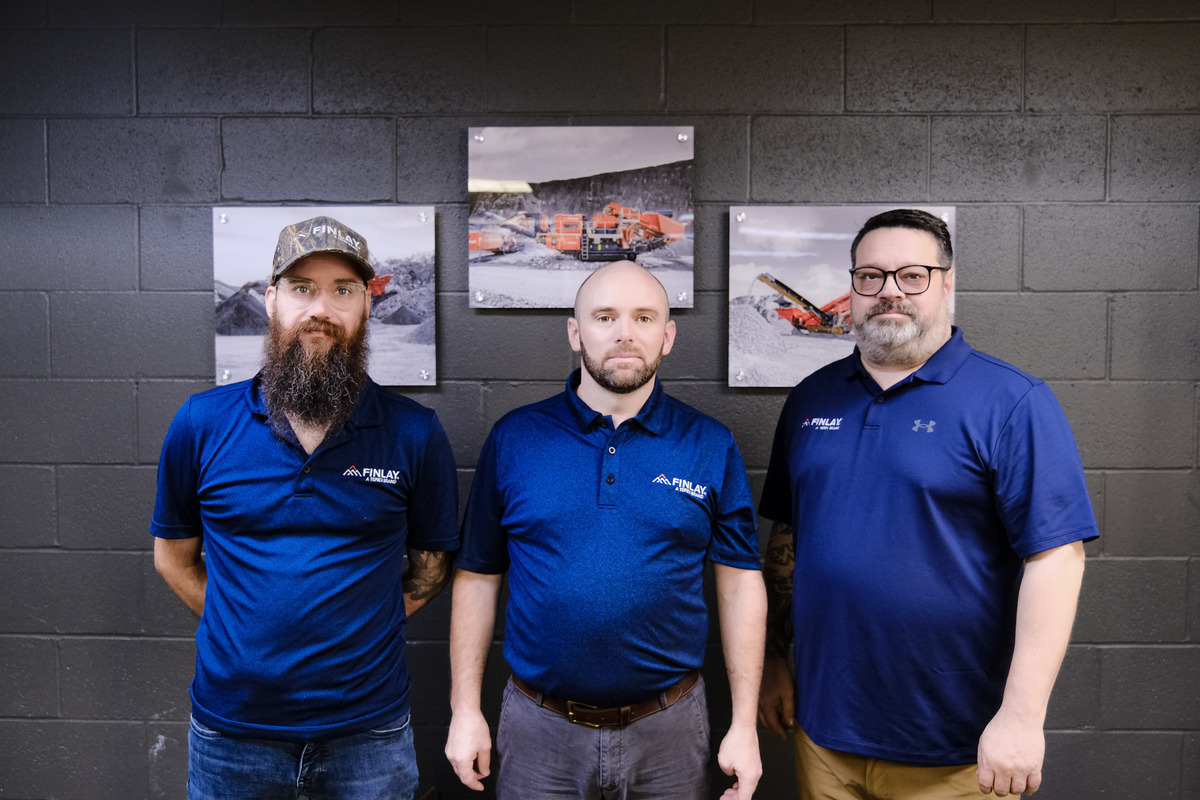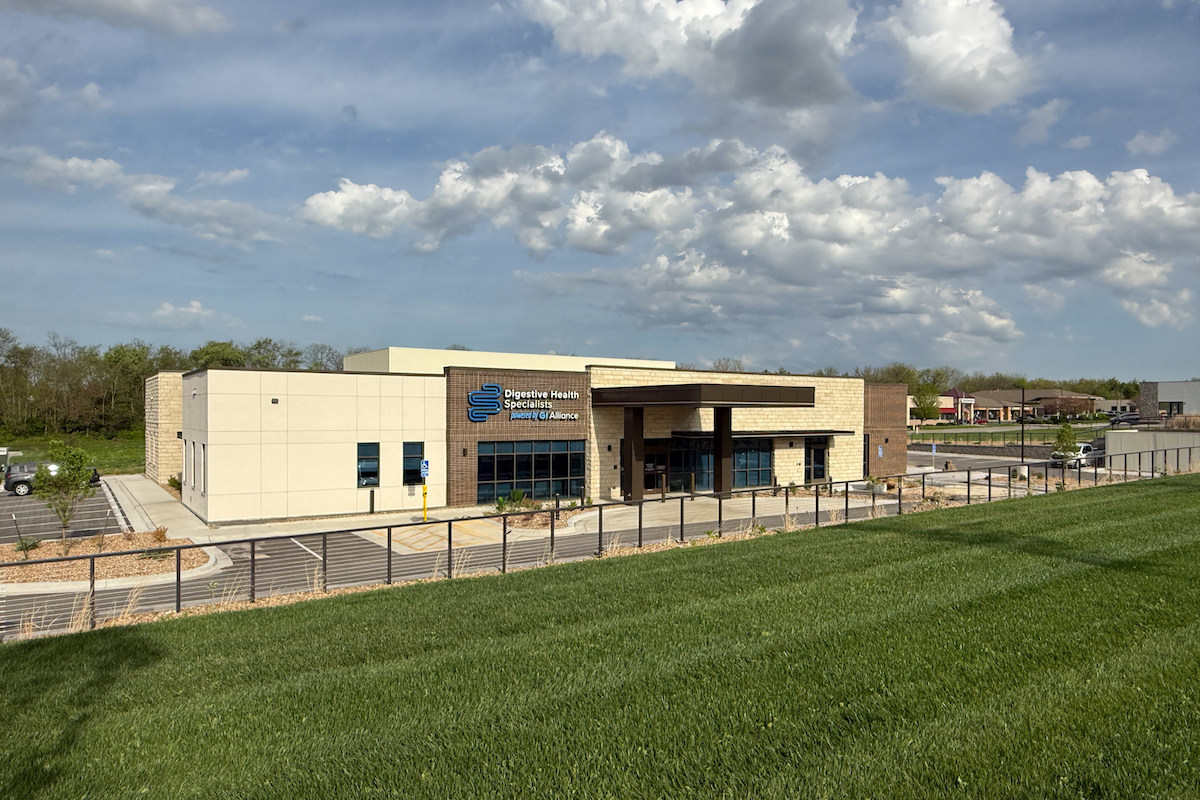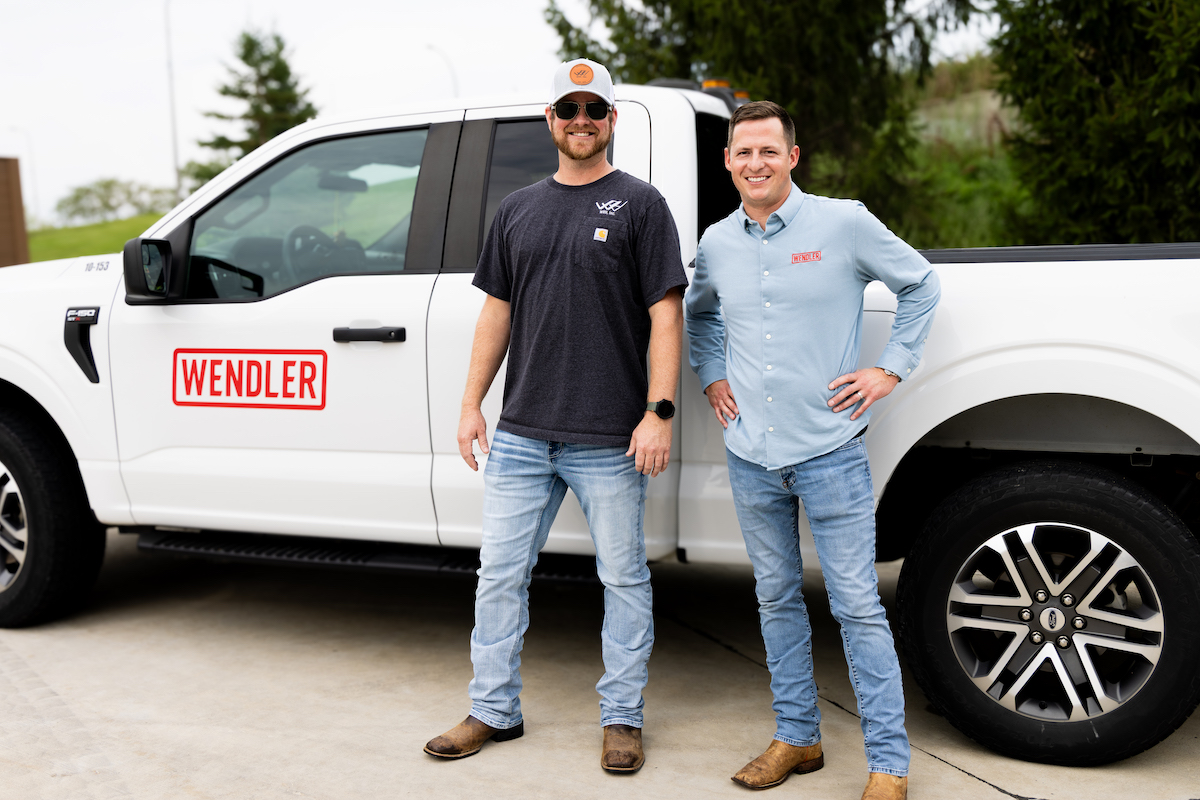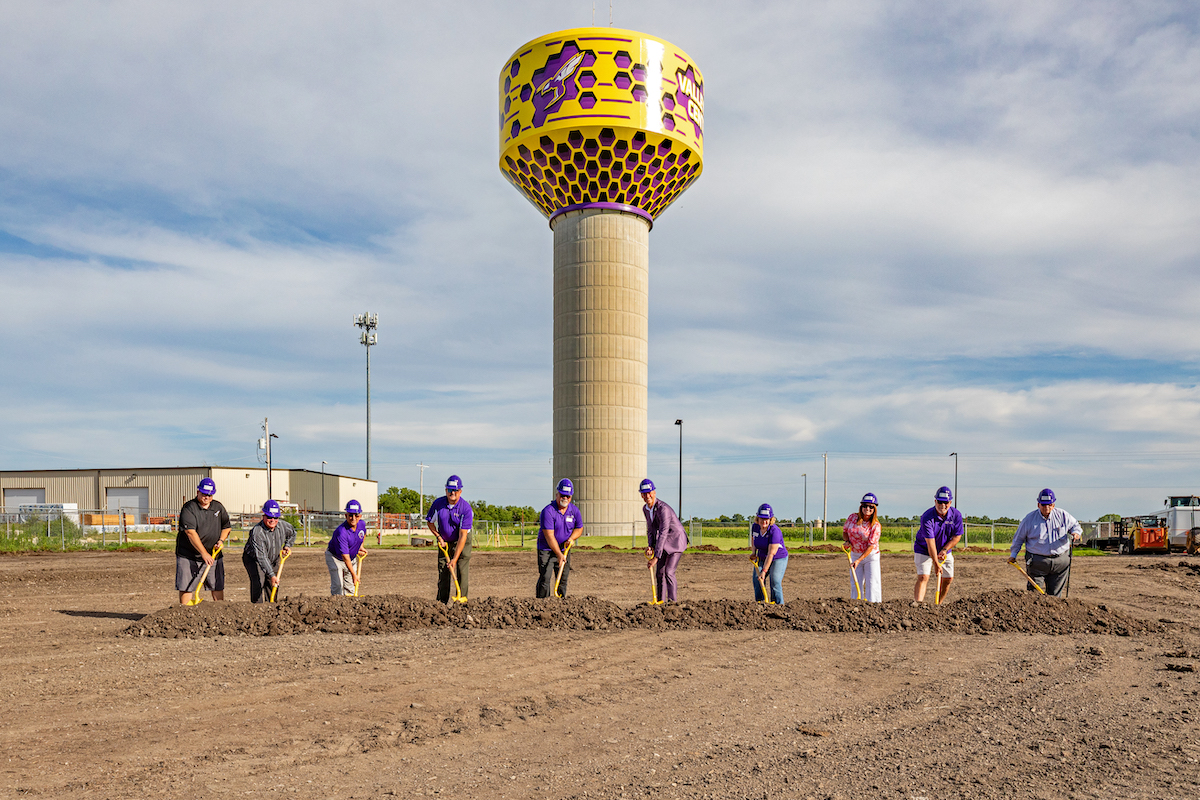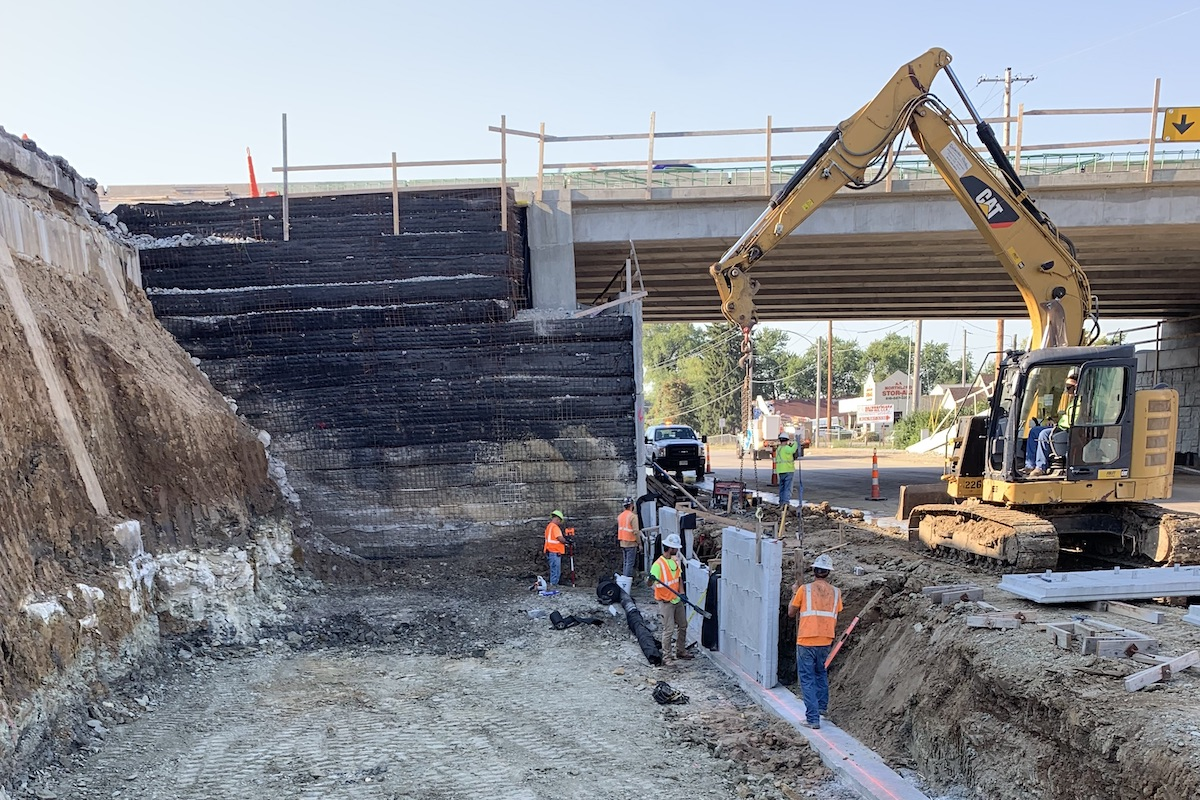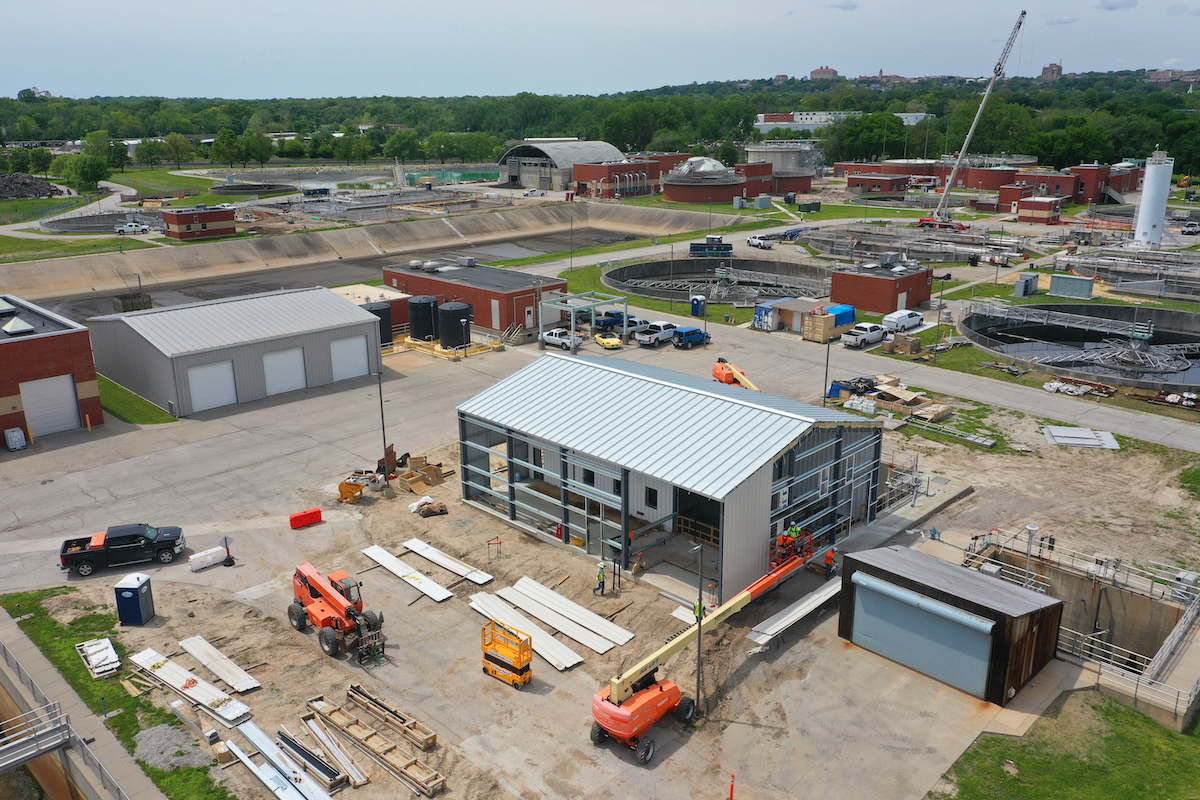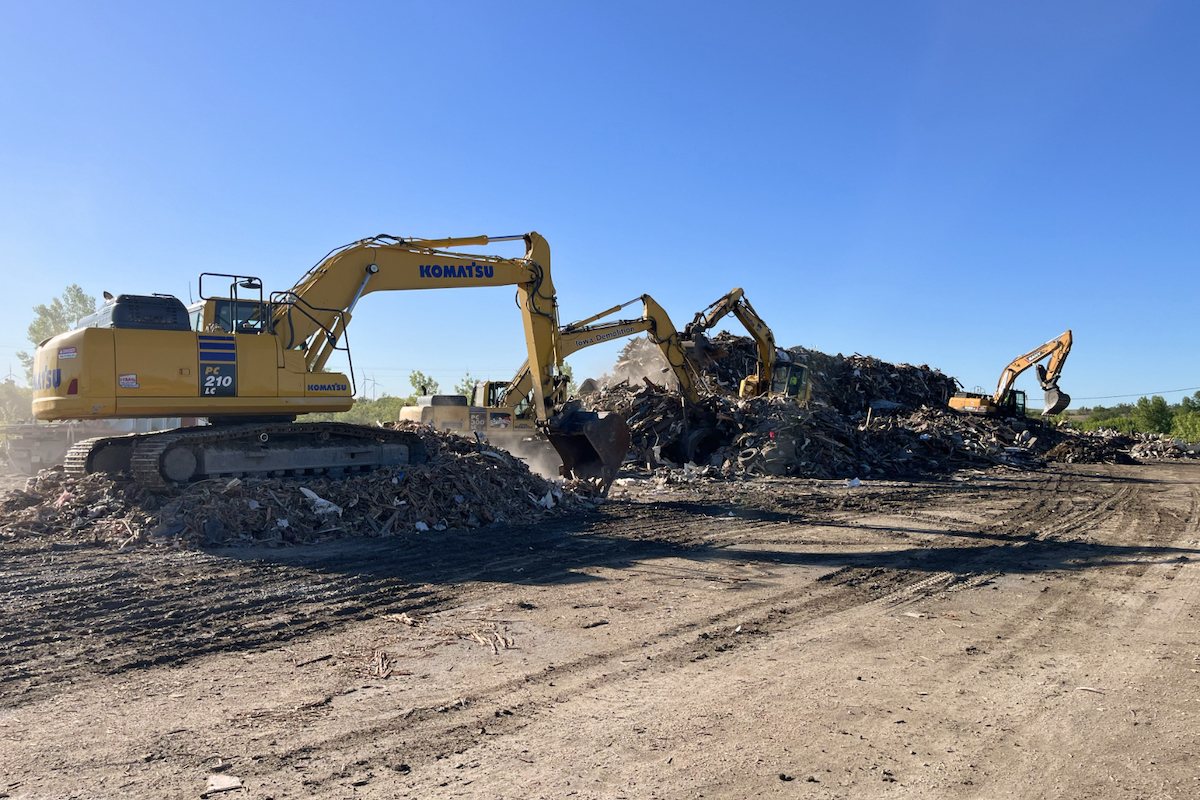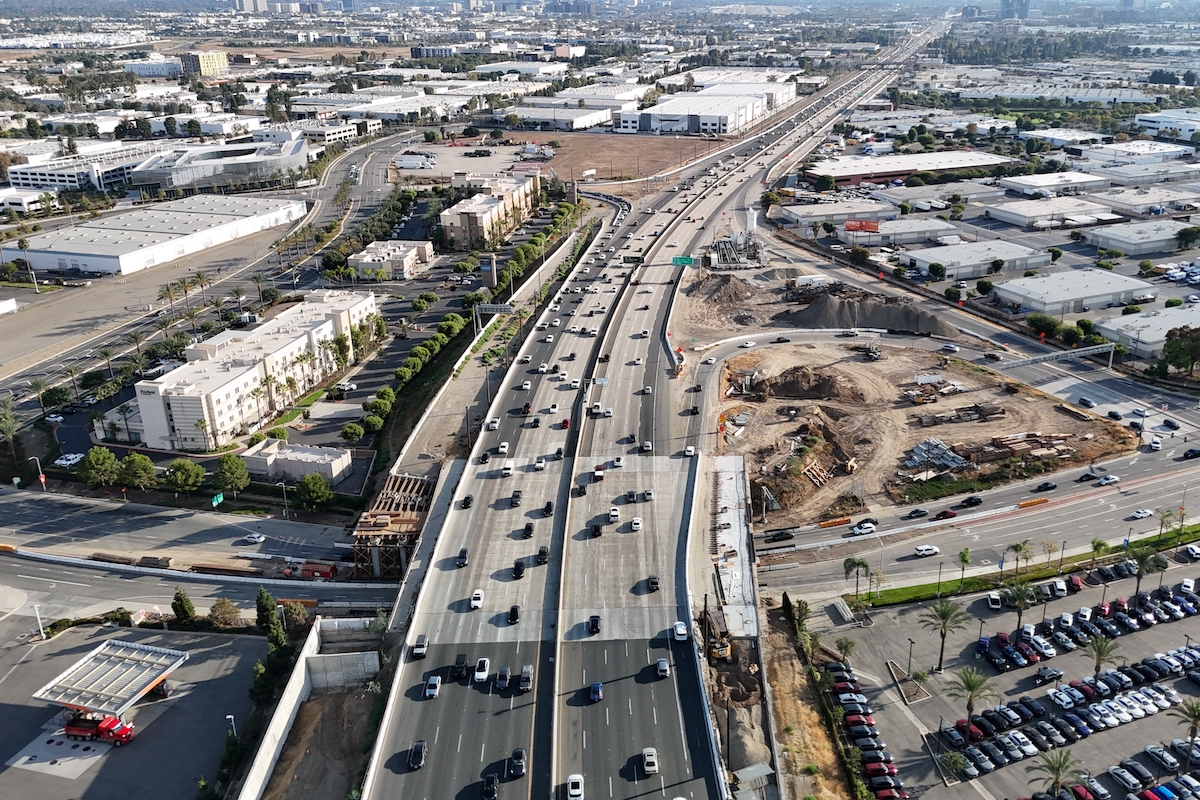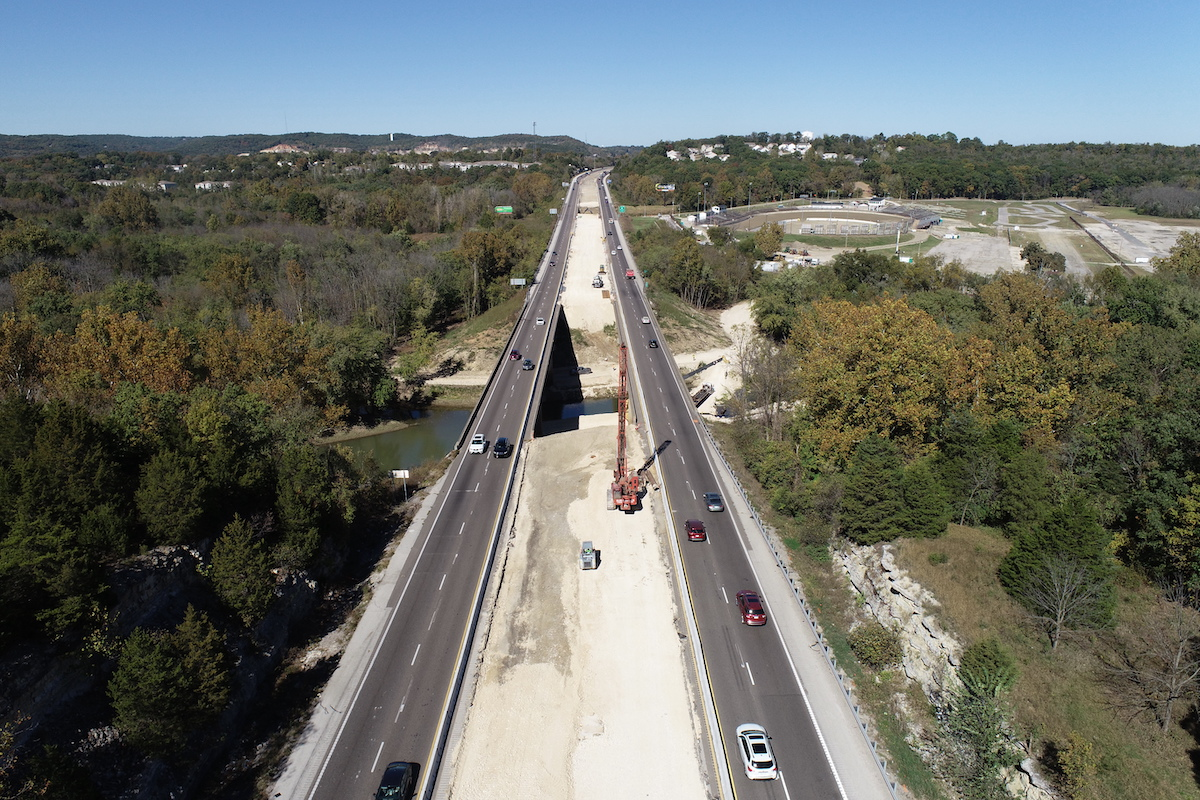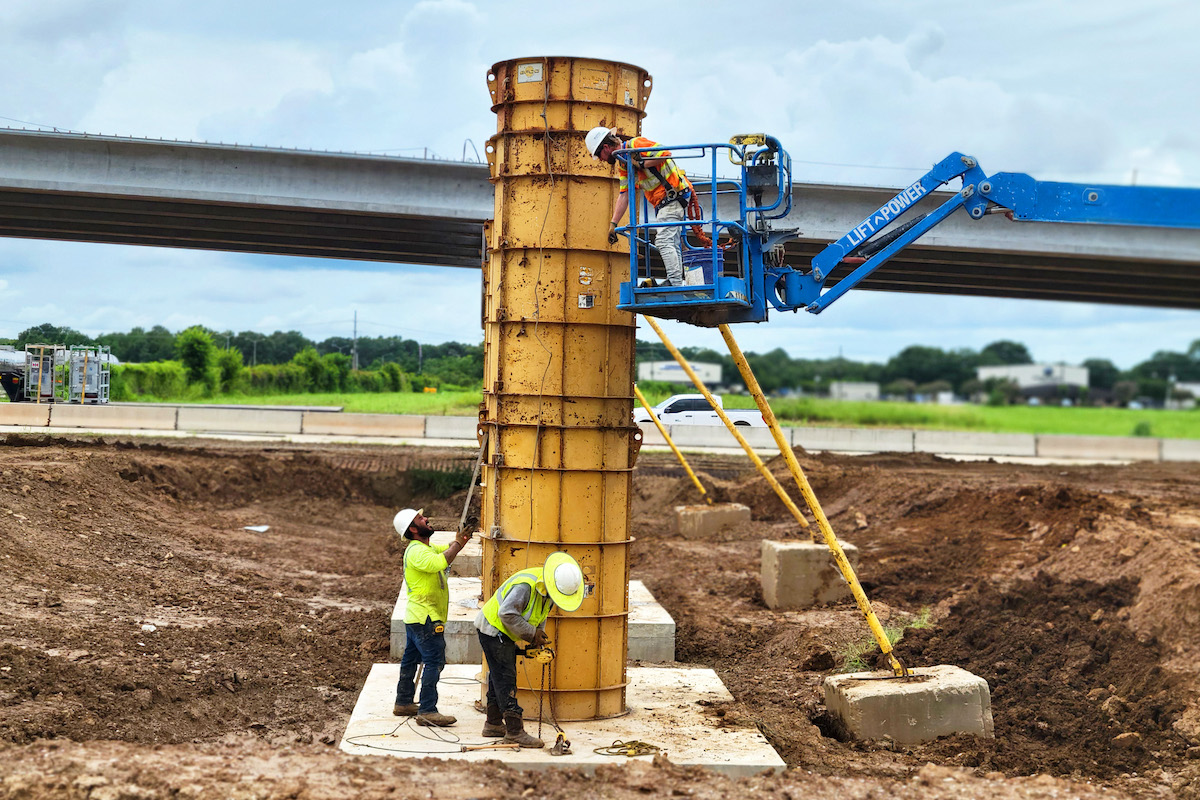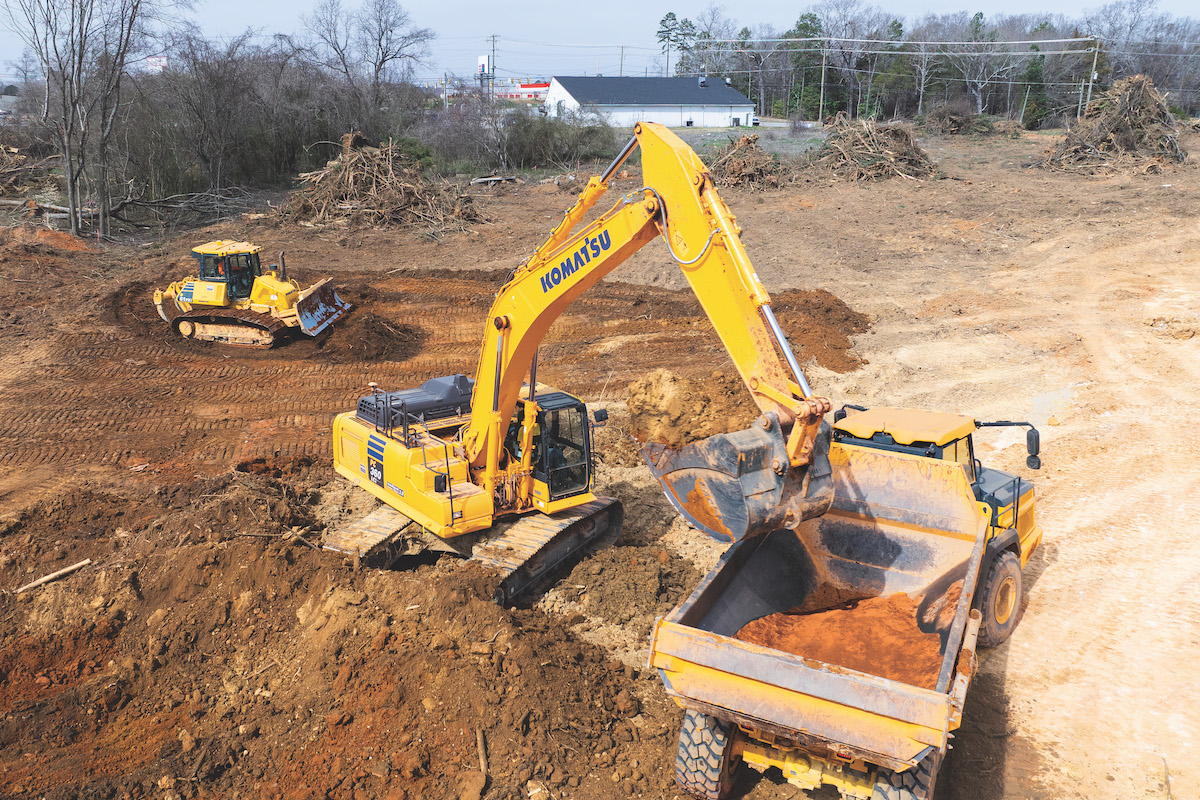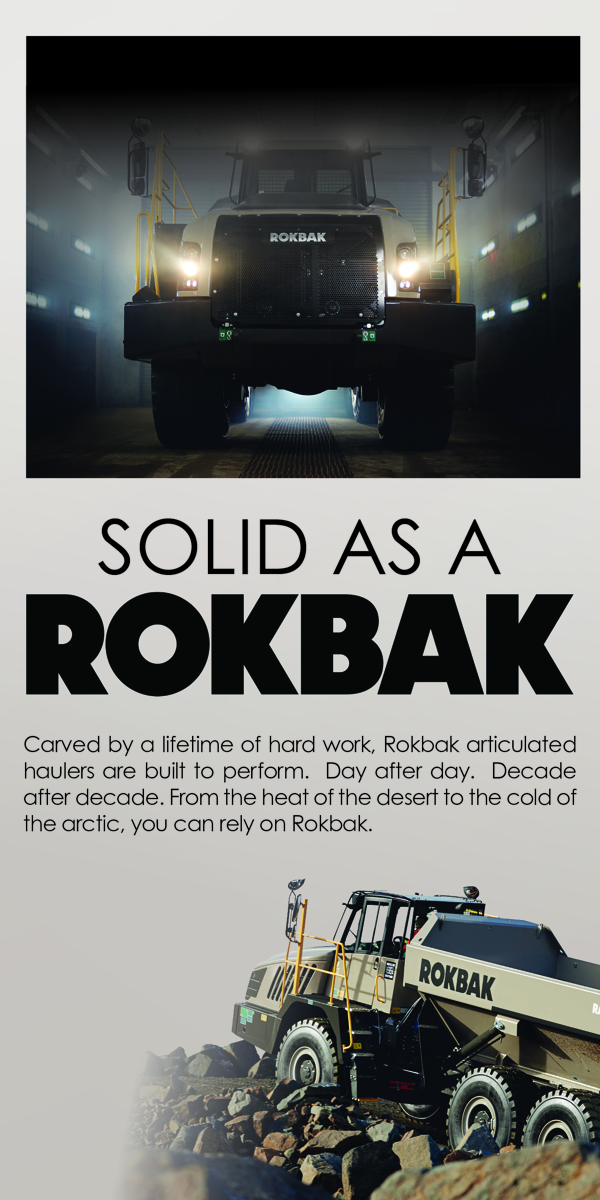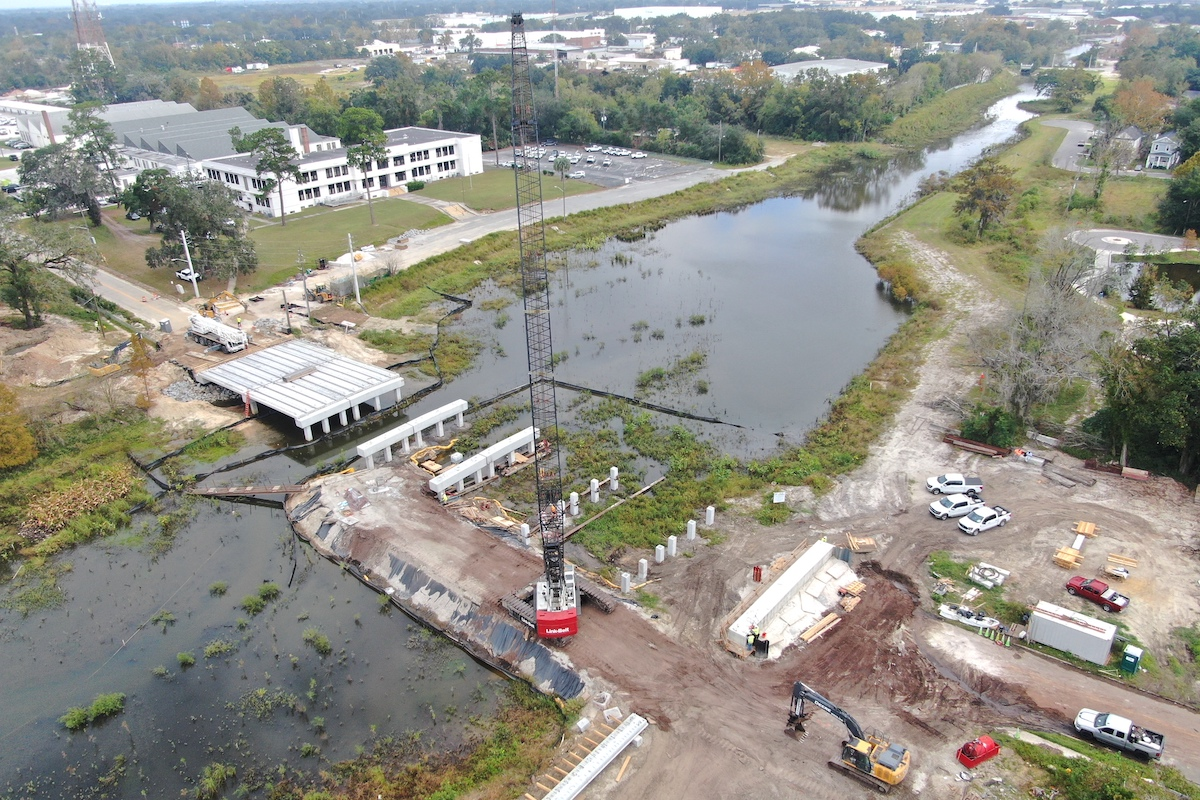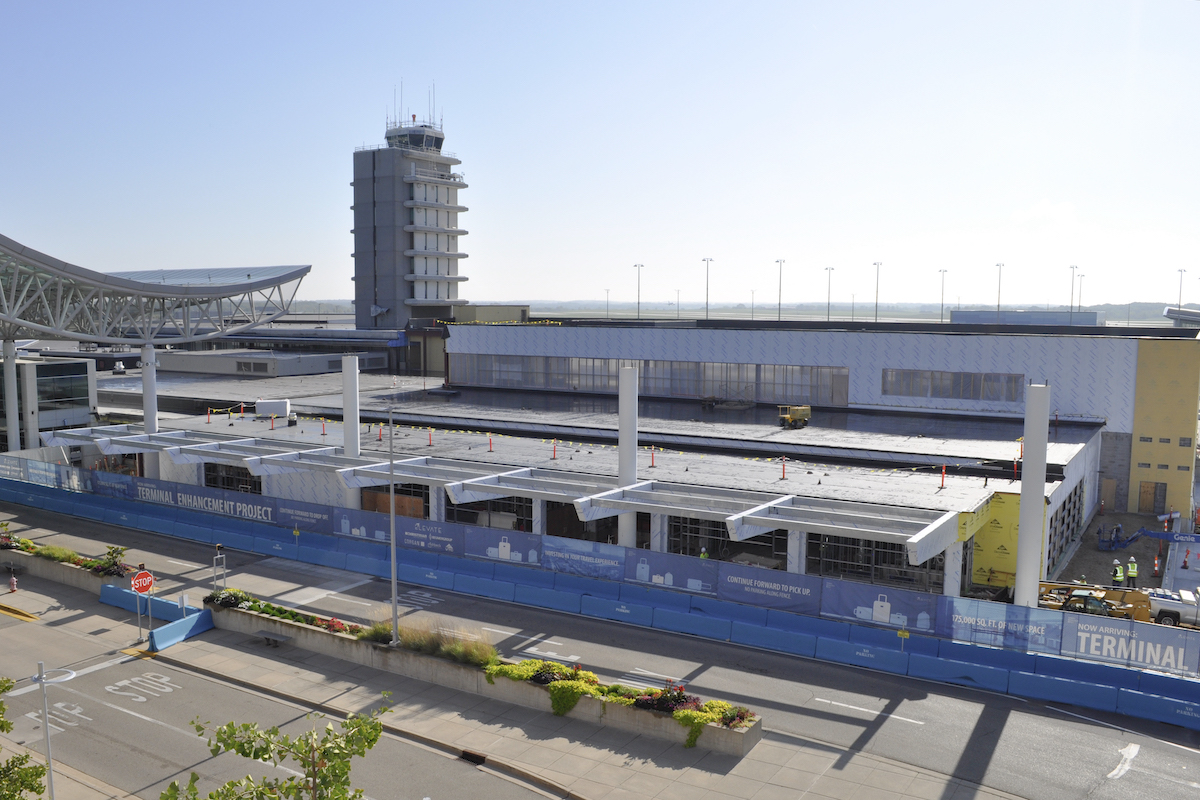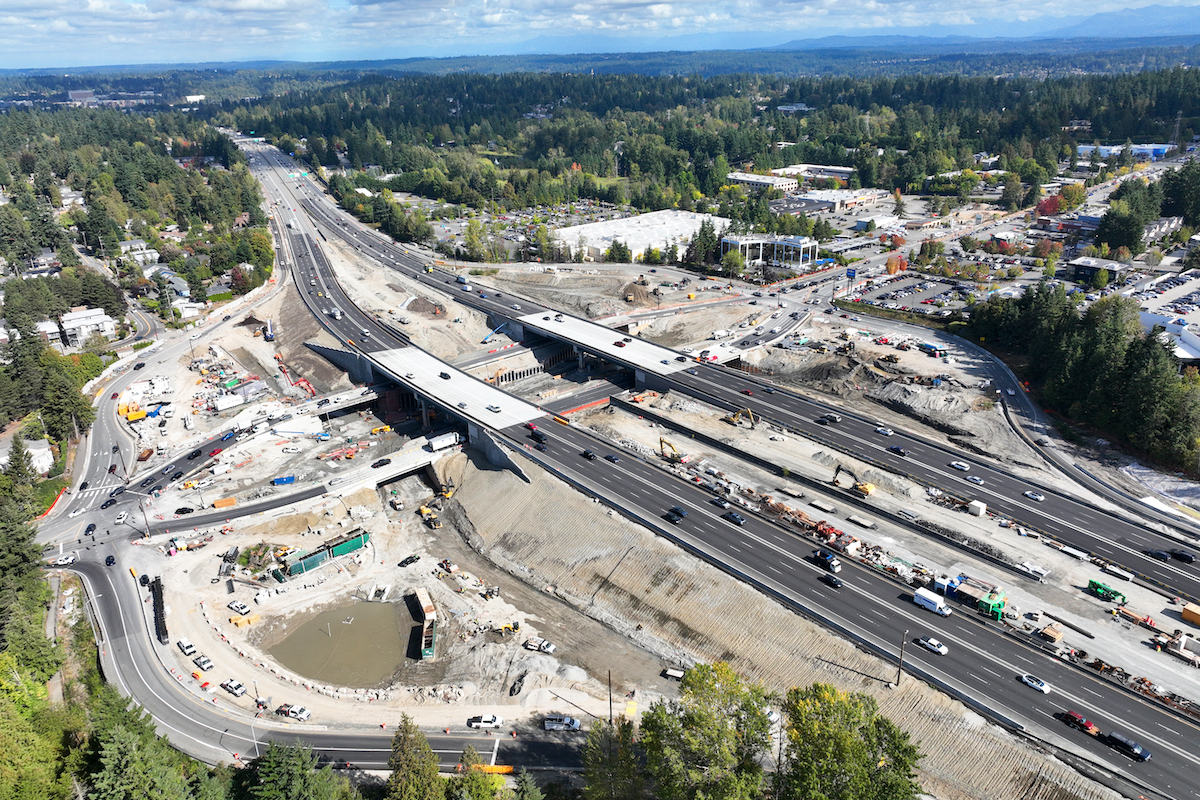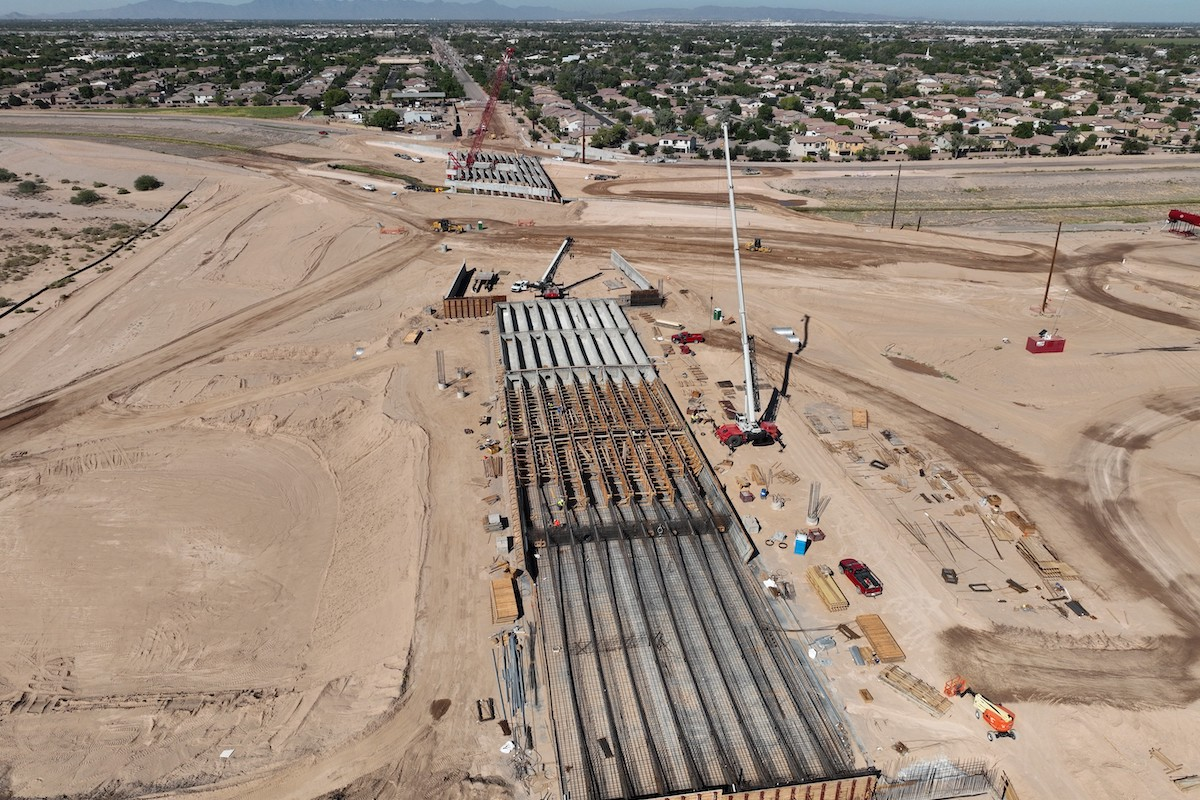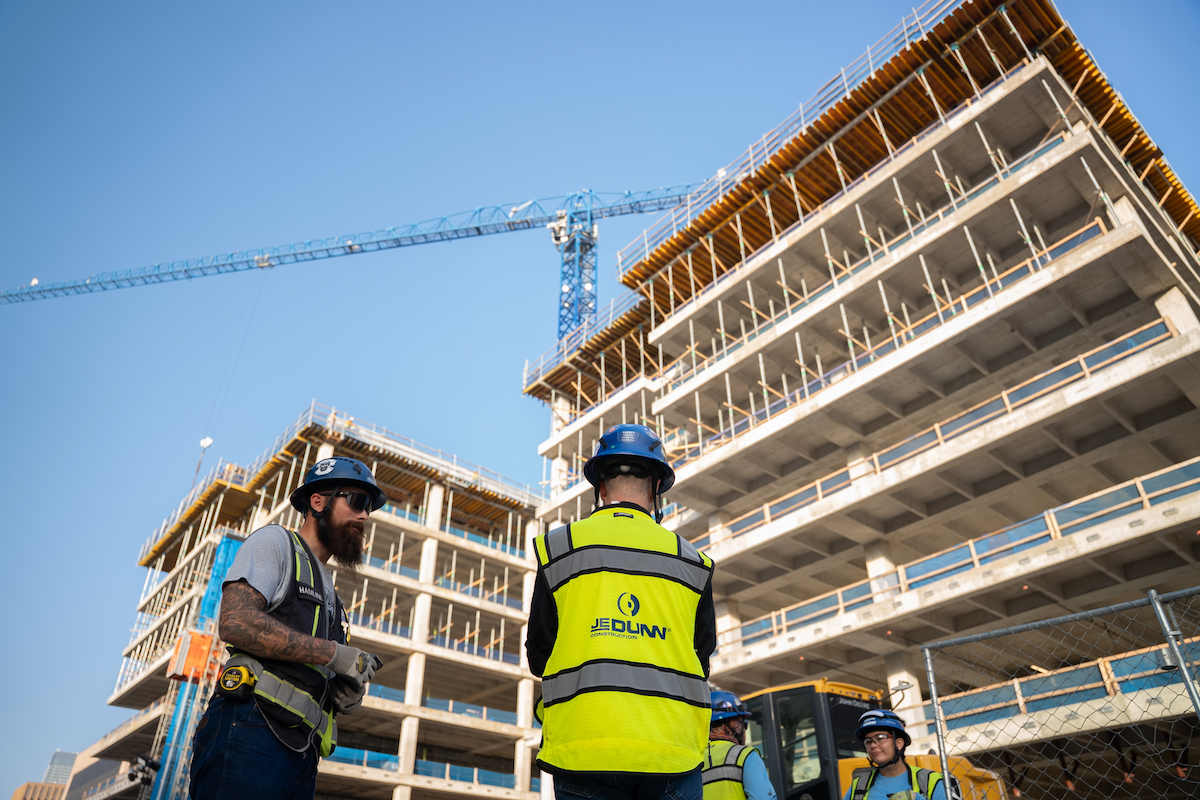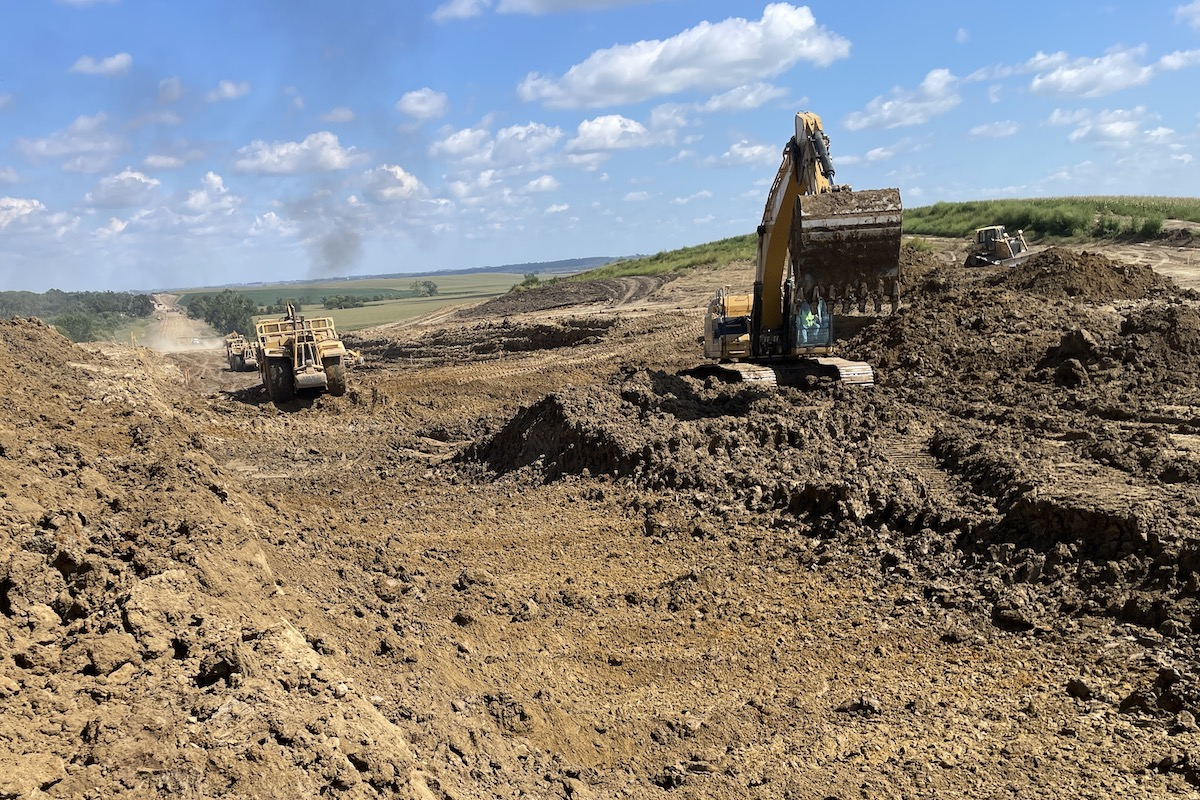Koss Construction is heading up a 5.5-mile pavement replacement project on U.S. 24, on the northeast side of Koss’ hometown of Topeka, Kansas. The $64.4 million Kansas Department of Transportation (KDOT) project started in July 2023 and is expected to be finished in 2027. The project extends from the east side of Grantville, Kansas, to Topeka Boulevard on the north side of Topeka.
Originally built in the 1950s, many places along the two-lane road surface, roadbed, and median infrastructure are degraded and crumbling.
“U.S. 24 is being fully reconstructed,” said Chris Berroth, Senior Estimator at Koss. “The project involves removing existing pavement and demolition of five existing bridges, improving grading and drainage, constructing three new bridges, box culverts, two existing bridge repairs, stabilizing the subgrade with cement, adding a cement-treated base, and then paving the roadway with new concrete. Final steps include shouldering and striping before reopening.”
The rebuild maintains the existing right of way. It includes significant grading to improve slopes and drainage. Roadway bridges over abandoned railroad track (located between Goldwater Road and Kaw Road) will be removed, and those roadway sections will be lowered about 25 feet to help improve sight distance.
Bluffs along U.S. 24 between Soldier Creek and K-4 were trimmed back to give more space between the highway and the cut faces, which will help improve sight distance and drainage. Overgrown trees were cleared where necessary.

| Your local Iowa Mold Tooling Co Inc dealer |
|---|
| Star Equipment LTD |
Median improvements were made through the urban portion, between Topeka Boulevard and Goldwater Road. This work includes raised medians, intersection median barriers, and median crossovers with directional left-turn bays. A KDOT spokesperson said that “these reconfigurations, which restrict turning maneuvers, are expected to reduce potential conflict points and increase safety, while maintaining access and traffic flow.”
The roadway timeline includes six phases:
- Phase 1 started in 2023 and reconstructed frontage roads, maintaining two lanes in each direction.
- Phase 2, in 2024, started work on the mainline from Kansas Avenue to Goldwater Road, about 1.1 miles east, and used the new frontage roads to divert traffic.
- Phases 3 and 4 started this year and will complete eastbound mainline construction from Goldwater Road to Muddy Creek, which is just past Koa Road, and is the eastern endpoint of the project.
- Phase 5 starts in 2026, to complete the westbound side from Goldwater Road to Muddy Creek.
- Phase 6 starts in 2027, to complete the reconstruction of U.S. 24 from Kansas Avenue to Topeka Boulevard.
After finishing the highway work, KDOT will follow with two bridge replacement projects: one at U.S. 24 and Goodyear Road, the second at U.S. 24 and Stover Road. Both of those future sites are west of the terminus for the current project. Goodyear Road construction is expected this fall, and Stover Road is expected in spring 2028.

| Your local Takeuchi Mfg Ltd dealer |
|---|
| Kirby-Smith Machinery |
| Star Equipment LTD |
Once complete, the rebuilt U.S. 24 highway will:
- Increase safety, reducing conflict points by 70 percent. A 2018 study showed the urban section (Topeka Boulevard to Goldwater Road) had a crash rate 6 percent higher than the statewide average. It is projected that the intersection improvements will reduce conflict points by roughly 70 percent. KDOT estimates the fatal crash rate in the project area was 150 percent higher than comparable locations.
- Streamline access to local businesses via redesigned medians.
- Open new sites for economic development.
In addition to safety, another top concern has been maintaining traffic flow, particularly to help adjacent businesses and area residents. Prior to starting, KDOT and Koss hosted a “Chat with the Contractor” meeting to address project phasing and concerns. The KDOT-Koss team emphasized that phasing was a key factor in maintaining access.
Berroth said that despite the project’s relatively short length, it presented numerous complexities. He noted that five bridges were removed — or will be — and three other bridges were rebuilt. A box culvert had to be built to replace two bridges, and two culverts were widened and rehabilitated.

| Your local Leica Geosystems Inc dealer |
|---|
| Laser Specialist inc |
Additionally, Berroth explained, major grading and shoring work is required to lower the profile between Goldwater Road and Soldier Creek. Temporary shoring was installed along more than 2,300 lineal feet along the median to allow for a 25-foot grade cut, changing the roadway’s profile. This work allows head-to-head traffic on the existing westbound lanes while the eastbound lane is lowered to the new profile grade. In 2026, traffic will be head-to-head on the eastbound lanes while the westbound grade is lowered.
The extensive grading presented the additional challenge of managing excavated materials. A related issue was coordinating rock and cement for concrete. Berroth said that the “project underscored the need for adaptability in material management and ingenuity in temporary solutions.”
Berroth said Koss is using “as much recycled concrete as we can.” The recycled material is being used in lieu of virgin aggregate for the cement-treated base prior to the top layer of pavement. The recycled concrete is crushed off site.
KDOT allows some usage of recycled materials as long as those materials meet certain performance criteria. According to KDOT, there can be cost savings when recycled materials are used, compared to the cost of virgin material plus hauling costs from a quarry to the project site.

| Your local Komatsu America Corp dealer |
|---|
| Road Machinery and Supplies Company |
The project required standard construction equipment. GPS and Leica stringless control were used for grading, base, and paving operations. The spokesperson from KDOT stressed the importance of “leveraging new technologies that are crucial for efficiency and accuracy.”
Engineers had to coordinate utility relocations that impacted local businesses and the larger area around various project sites.
Contractors encountered unexpected utility conflicts on frontage roads. Kansas Gas and AT&T were contacted and immediately started to resolve the issues, which took around three to four months. Roadway crews were able to adjust their work and move to areas away from the utility relocations.
Berroth said that one of the key learnings from the U.S. 24 work was the importance of proactive utility coordination.

| Your local Trimble Construction Division dealer |
|---|
| SITECH Central LLC |
“On a project of this magnitude, with different types of construction taking place at the same time, constant communication with everyone involved is vital to the project’s success,” he said. “There have been obstacles from time to time, but good communication and collaboration between all parties has truly been the key to overcoming these obstacles.”
A portion of the funding for the U.S. 24 project comes from Kansas’ Eisenhower Legacy Transportation Program. Also known as IKE, the program was given the nickname of the 34th President who spent his boyhood in Abilene, Kansas, 89 miles west of Topeka. America’s Interstate Highway System is one of Dwight D. Eisenhower’s legacy initiatives.
The IKE program is a 10-year $10 billion commitment aimed at improving the state's transportation infrastructure, and not just highways. IKE, overseen and managed by KDOT, focuses on improvements across various transportation modes, including highways, bridges, public transit, aviation, short-line rail, and bike/pedestrian paths.
For transportation decision makers, IKE can provide the following advantages:

| Your local Gomaco dealer |
|---|
| Fabick CAT/MO |
| Road Machinery and Supplies Company |
- Flexibility: Projects are selected every two years, allowing KDOT to address new concerns.
- Community involvement: Projects are meant to meet regional needs.
- Multimodal: Funds can be used for multimodal projects.
- Economic development: The focus on economic development aligns transportation with development opportunities.
- Public transparency: Projects and funding are tracked on public websites.
IKE is supported by revenue from Kansas’ motor fuels tax, registration fees, and sales tax. Those funds are directed to the State Highway Fund. IKE does not receive state general funds. Federal reimbursements also contribute to IKE.
For the U.S. 24 project, the funding formula is 80 percent federal and 20 percent state.
- Owner: Kansas Department of Transportation; Metro Engineer, Steve Baalman; Project Engineer, Michelle Anschutz; Road Designer, Greg Gonzales Jr.; Bridge Designer, Shawn Schwensen
- General Contractor: Koss Construction Co., Topeka, Kansas
- Other Key Contractors: Bettis Asphalt & Construction, Topeka, Kansas; Heartland Traffic Services, LLC, Kansas City, Kansas; Reece Construction Co. Inc., Salina, Kansas; King Construction, Hesston, Kansas Photos courtesy of the Kansas Department of Transportation












